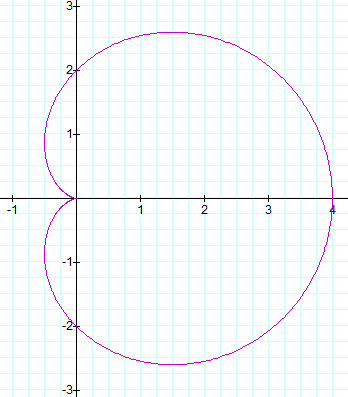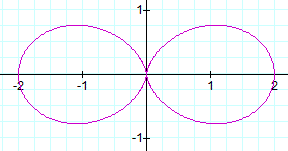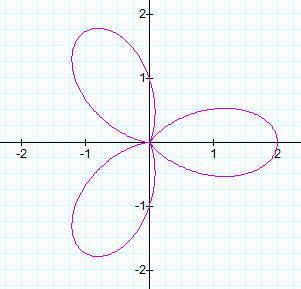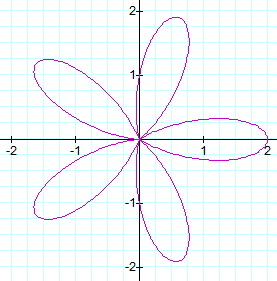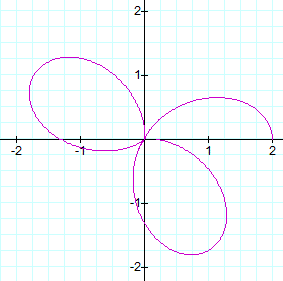
Assignment
11
Polar
equations
Letís
investigate the following equation:
and itís
graph:
This shape
is called a n-leaf rose and this shape is maintained
as long as a and b are equal.
When a and b increase and decrease together, the n-leaf becomes
larger and smaller respectively.
When a and b become negative, the n-leaf reflects about the
y-axis and becomes larger as a and b continue to decrease.
Here are the
graphs of the equation at various values of a and b.
When a = 2
and b = 2:
When a = -2
and b = -2:
What happens
if we now change the value of k?
When k = 0,
the shape of the graph is that of a circle When k is an integer, the n-leaf
rose has a number of leaves equal to the absolute value of k with one of the
leaves on and symmetrical to the positive x-axis (I call this the base leaf).
When k = 2
When k = 3
When k = 5
What k is a
non integer, the graph is a shape that is in transition from the graph of the
greatest integer less than k to the least integer greater than k.
The graph
below represents the equation when k = 2.4.
As you can
see the graph is in transition between k = 2 and k = 3.† It has more than two leaves, and is in the
process of gaining itís third leaf.
What happens
when cosine is replaced with sine?
The above
properties are the same except for the orientation of the shapes.
When k = 0
the graph is of the same circle, but when k=1 the 1-leaf rose is now
symmetrical with the y-axis.
When k = 2,
the base leaf is symmetrical with the line y=x.
Further
increases in the integer value of k result in the base leaf being symmetrical
with a line that approaches the x-axis.

